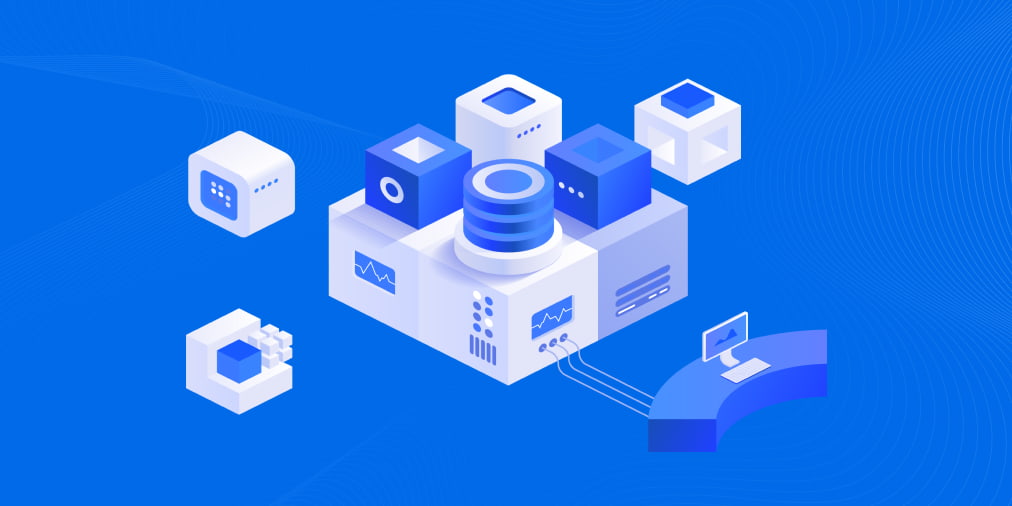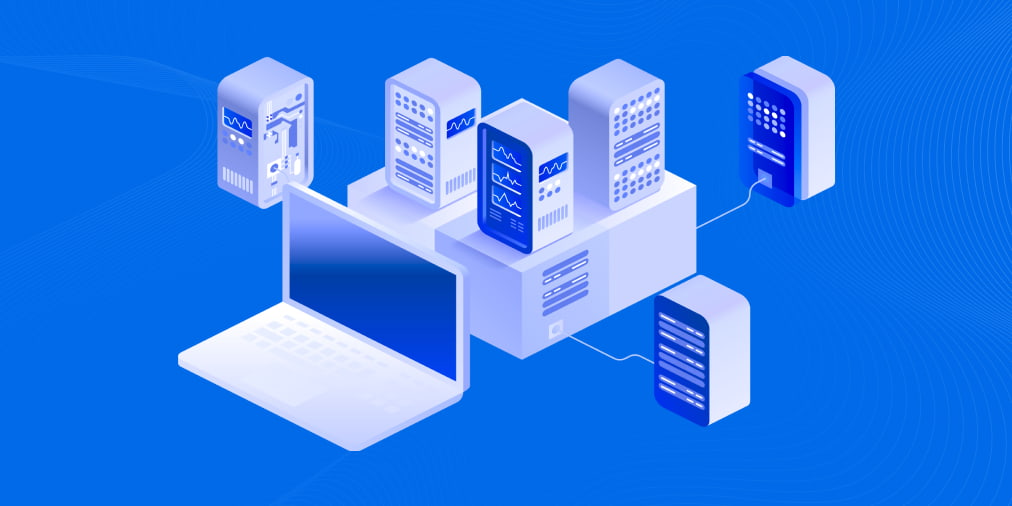What Is Incremental Backup?
An incremental backup is a backup method that copies only changes written since the last backup – whether full or incremental. Incremental backup is widely used for regular backups for its efficiency in terms of time and storage space savings. This blog post explains how incremental backup works and the different subtypes.
Contents
- How Incremental Backup Works
- Types of Incremental Backup by Mechanism and Approach
- Types of Incremental Backup by Level of Change Tracking
- Pros and Cons of Incremental Backup
- Incremental Data Backup with NAKIVO Backup & Replication
How Incremental Backup Works
Unlike full backups, where all data is copied to the backup repository with every backup job, incremental backups offer a much leaner approach. A full backup of the system is performed only once or periodically. After that, every job copies only the data that has changed since the previous job run, that is an “increment” is created. The resulting storage savings are significant and become more significant as the infrastructure grows.
Let’s say you have a virtual machine with only three files on it. On day 1 (Sunday), the initial full backup is created, that is, all files are copied to the backup repository.
On day 2 (Monday), a data block in File 1 is changed. Instead of copying the entire VM when it performs its routine backup at the end of the day, the backup software copies only the new data block from File 1 to the backup repository and creates a reference that the old data block was deleted.
On day 3 (Tuesday), two new data blocks are added to File 2. They will be copied to the backup repository during the incremental backup.
The process will be repeated until the next full backup. The backup software can always restore a VM to the necessary recovery point using the initial full backup and all the needed increments.
Types of Incremental Backup by Mechanism and Approach
As backup software evolved, new types of incremental data backup have emerged.
(Regular) incremental
The regular incremental backup is the most straightforward type of incremental backup, and the one illustrated above. The backup software copies only the data changed since the most recent backup job. To improve reliability, it is recommended that you make periodic full backups (usually once a week). These periodic full backups do not necessarily have to copy all the data set from the source machine and instead can rely on the synthetic full backup approach.
Forever-incremental (also known as progressive incremental)
With the forever-incremental approach a full backup is made only once and not created again (periodically). After the initial full backup, backup software copies only increments, which helps save storage space.
Reverse incremental
With the reverse incremental approach, a full backup is synthetically created after each incremental backup job. This way, you always have a synthetic full backup to recover from. After a full backup is synthesized, the increment will be stored in the backup chain preceding the synthetic full backup.
Forever forward incremental
With the forever forward incremental approach, backup software modifies the first full backup when the number of recovery points exceeds the retention policy. For example, you set the retention policy to save only 10 recovery points for a VM. When recovery point number 11 is created, the backup software will incorporate the first recovery point into the full backup.
Multilevel incremental
Multilevel incremental backups require a more elaborate approach. In this case, different levels are assigned to the backups. The full backup is level 0, and the incremental backups are assigned levels 1, 2, 3, etc. (the amount of levels will vary according to the size and complexity of the infrastructure).
Each level contains only the changes made since the last n-1 level backup. If you make a level-1 backup on Monday and then again on Thursday, the Thursday backup will contain the changes made since Monday (even though backups of other levels were made on Tuesday and Wednesday).
Multilevel backups allow for faster recovery, as fewer increments are needed to “assemble” the necessary recovery point. However, this type requires more effort, storage, and attention. In our example, if a crash happens on Friday, we would need only the full (level 0) backup, and the Monday, Thursday and Friday increments to restore the VM.
Types of Incremental Backup by Level of Change Tracking
Incremental data backups can be further classified based on the level at which data changes are tracked.
File-level
With file-level incremental backups, if any file is added or changed, backup software copies this entire file to the backup repository. This type of incremental backup, however, has its drawbacks. If the added/changed file is large, the resulting backup will also be large, extending the backup job duration and requiring more storage space.
Block-level
With block-level incremental backups, backup software identifies the data blocks that have been changed since the most recent backup job and copies them to the backup repository. Block-level tracking allows for a more granular approach compared to backing up entire files (as is done with file-level incremental backup).
Byte-level
With byte-level incremental backups, backup software identifies individual bytes that have been changed since the most recent backup job and copies them into the repository. This allows for even smaller backups.
Pros and Cons of Incremental Backup
Compared to full and differential backups, incremental backups have the following benefits:
- Faster backup jobs: Since only the changed data is copied to the repository, the backup process takes much less time, resulting in the ability to increase the frequency of backup jobs without overstraining the network.
- Less storage space: Full and differential backups consume a lot of space in your storage, forcing you to expand it. Incremental backups are much more storage-friendly.
However, sometimes backup software will need to go through all increments to recover a VM, which may have a negative impact on recovery speed.
Incremental VM Backup with NAKIVO Backup & Replication
NAKIVO Backup & Replication is an agentless backup software designed for virtual environments based on VMware vSphere, Microsoft Hyper-V, and Amazon EC2. The product offers two types of backup repositories you can choose from to meet your specific needs:
- The “Incremental with full backups” type (default backup repository) provides reliability with a special architecture optimized for efficient operation on deduplication appliances, such as NEC HYDRAstor, Quantum DXi, EMC Data Domain, HP StoreOnce, etc. With this repository, incremental-with-full backups are created, storing chains consisting of periodic full backups and several increments between these full backups.
The special backup repository has an improved file structure. All backed-up data blocks are arranged into a limited number of files for each VM: one full backup file and one additional file for each increment. During VM backup and recovery jobs, read/write operations are performed with a limited number of streams (that is, one per VM).
When this backup repository is used, the proprietary backup deduplication and compression functionalities in NAKIVO Backup & Replication cannot be enabled. Data deduplication is performed only by the deduplication appliance itself to prevent any possible conflicts.
- The “forever incremental” type (regular backup repository) is optimized for generic storage systems. The NAKIVO solution creates forever-incremental virtual machine backups, with multiple benefits relating to storage, performance, and recovery.
Once the initial full backup is made, all jobs are forever-incremental. Using the native VMware CBT and Hyper-V RCT technologies, the product tracks changed data blocks and stores only those blocks in the backup repository according to your retention policy. Up to 1,000 recovery points can be saved and rotated on a daily, weekly, monthly, and yearly basis. Every recovery point is, in essence, a number of references to data blocks that will need to be used to recreate the virtual machine as it was at a certain point in time.
In a backup repository, the recovery points might look as follows (letters signify data blocks and days of the week signify recovery points):
There are no duplicate data blocks in the repository when you use the built-in deduplication functionality. The unique data blocks can be further compressed to save even more space.
Increased Benefit with VM Backup Appliance
If you want to get even more benefits, install NAKIVO Backup & Replication directly on a NAS device. The resulting combination will be a high-performance backup appliance that includes backup hardware, software, storage, deduplication, and backup-to-cloud (AWS or Azure) functionality in a single device.
A VM backup appliance built in this way can help you offload your production server, protect your VM backups, and improve performance by skipping data transfers over the network – all while costing you up to 5X less than a purpose-built backup solution.
Conclusion
Out of all the available backup types, incremental data backup seems to offer the most benefits for companies with a growing virtual infrastructure. It ensures the reliability and accessibility of VM backups, helps save storage space, offloads the network, and results in faster backup processes.
NAKIVO Backup & Replication offers two data backup modes depending on your requirements: forever incremental (with possibility to enable global deduplication) and incremental-with-full.












